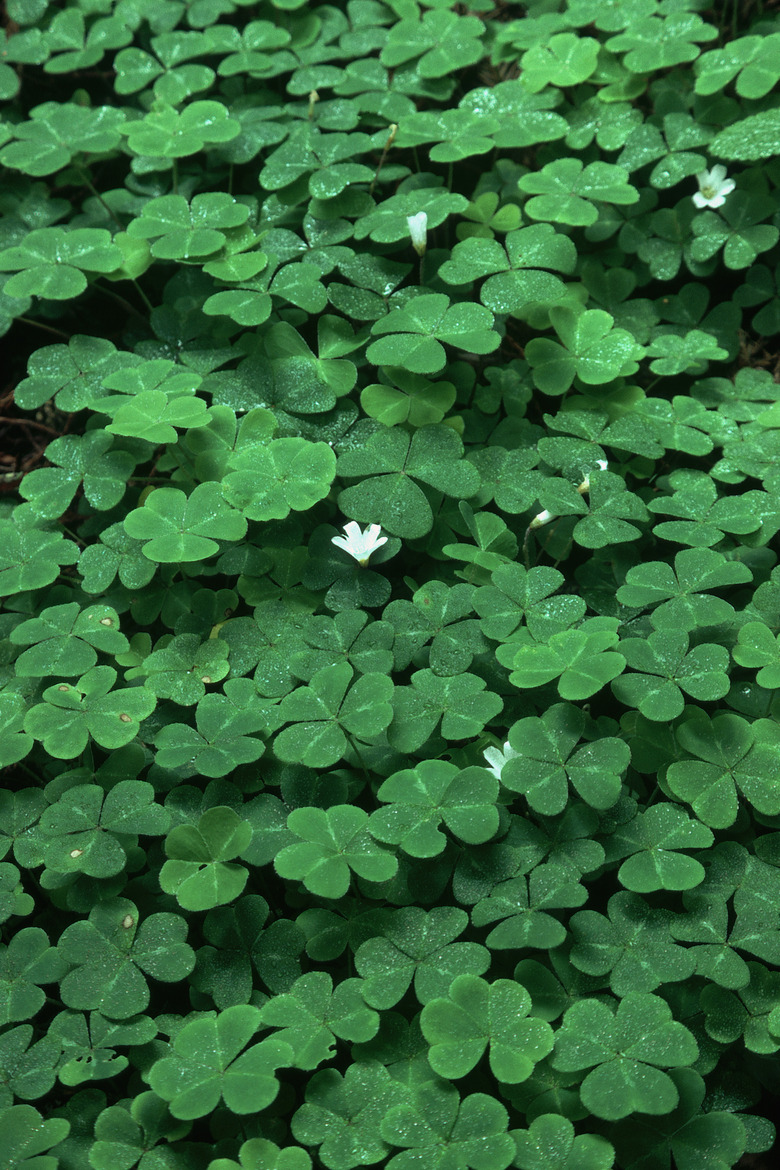The Best Type Of Clover To Plant In Shade
Most clover species prefer full-sun exposure, which means at least six to eight hours of direct sunlight each day. They usually tolerate a partial shade situation with only four hours of direct sunlight. There is one clover species, however, that stands out as more shade tolerant than the others, making it the best choice for shady locations.
Subterranean Clover
Subterranean clover is not only the most shade-tolerant clover; it is the most shade-tolerant legume. This is an annual clover, but it is highly successful at reseeding itself. The flowers bend down toward the ground after they are pollinated. Seeds form on the flower after it bends down to the ground, resulting in seed formation directly on or in the soil, hence the name subterranean.
Hay and Pasture
Subterranean clover, or subclover, is not well-suited to cutting for hay production. The plants can grow to a mature height of 1 foot but generally only grow between 6 and 8 inches tall. It is a good pasture clover, however, and has a high tolerance for close grazing. Purchase only certified seed when planting this clover in a pasture. The subterranean clover species can have high levels of phytoestrogen, which can cause reproductive problems. Certified seed contains seed from newer cultivars that have safe levels of phytoestrogen.
Soil Requirements
There is some variation in soil pH tolerances between subterranean clover varieties but, in general, they prefer a slightly acid to neutral pH between 6.0 and 7.0. This should be taken into consideration before purchasing clover seed. Clare and Koala are the best cultivars for alkaline soil with a pH of 7.2 or higher. Mt. Barker and Karridale cultivars prefer more acidic soil. Subclover will grow in sandy, loamy and clay soil, although most varieties prefer soil that drains well. The Meteora and Trikkala cultivars are best for wet soils with poor drainage capabilities.
Water Requirements
Average spring rainfall should also be considered when choosing a subclover variety. Early- and mid-season varieties are best for areas where rainfall amounts are high in early- to mid-spring. Late-season varieties grow best in areas that receive high rainfall amounts in late spring. Total average annual rainfall amounts should be a determining factor as well. Geraldton is an early-season variety that requires a minimum of 10 inches of annual rainfall to grow successfully. Woogenellup is a mid-season variety that requires 20 inches of rain while Mt. Barker, another mid-season variety, requires 25 inches of rainfall per year. Tallarook is a late-season variety that requires 35 inches of annual rainfall.
